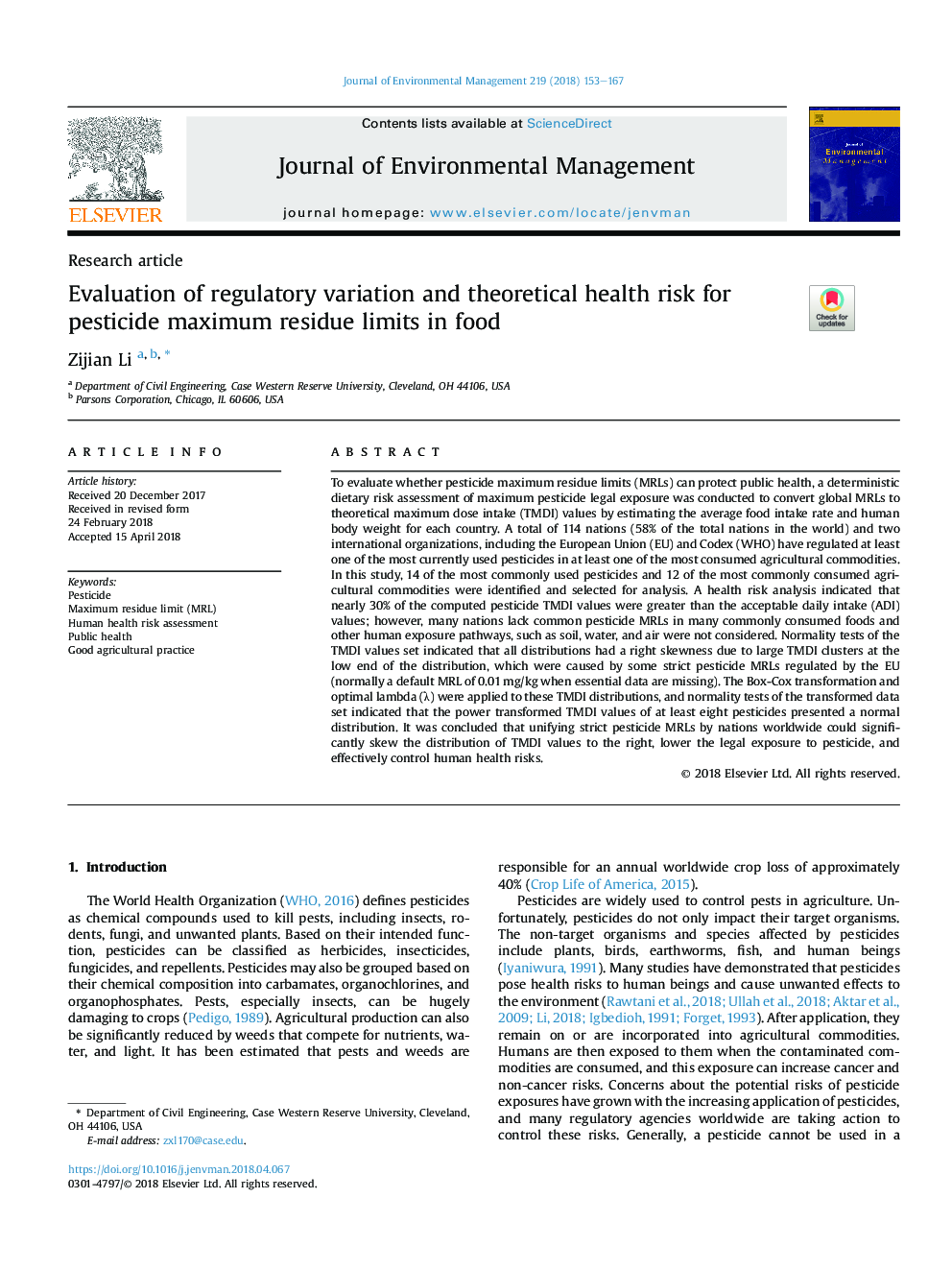| Article ID | Journal | Published Year | Pages | File Type |
|---|---|---|---|---|
| 7476669 | Journal of Environmental Management | 2018 | 15 Pages |
Abstract
To evaluate whether pesticide maximum residue limits (MRLs) can protect public health, a deterministic dietary risk assessment of maximum pesticide legal exposure was conducted to convert global MRLs to theoretical maximum dose intake (TMDI) values by estimating the average food intake rate and human body weight for each country. A total of 114 nations (58% of the total nations in the world) and two international organizations, including the European Union (EU) and Codex (WHO) have regulated at least one of the most currently used pesticides in at least one of the most consumed agricultural commodities. In this study, 14 of the most commonly used pesticides and 12 of the most commonly consumed agricultural commodities were identified and selected for analysis. A health risk analysis indicated that nearly 30% of the computed pesticide TMDI values were greater than the acceptable daily intake (ADI) values; however, many nations lack common pesticide MRLs in many commonly consumed foods and other human exposure pathways, such as soil, water, and air were not considered. Normality tests of the TMDI values set indicated that all distributions had a right skewness due to large TMDI clusters at the low end of the distribution, which were caused by some strict pesticide MRLs regulated by the EU (normally a default MRL of 0.01â¯mg/kg when essential data are missing). The Box-Cox transformation and optimal lambda (λ) were applied to these TMDI distributions, and normality tests of the transformed data set indicated that the power transformed TMDI values of at least eight pesticides presented a normal distribution. It was concluded that unifying strict pesticide MRLs by nations worldwide could significantly skew the distribution of TMDI values to the right, lower the legal exposure to pesticide, and effectively control human health risks.
Keywords
Related Topics
Physical Sciences and Engineering
Energy
Renewable Energy, Sustainability and the Environment
Authors
Zijian Li,
